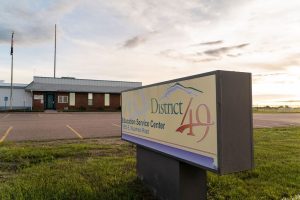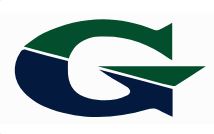Twenty-two students from the engineering design and development class at Sand Creek High School in Falcon School District 49 flew across the country to the Massachusetts Institute of Technology to present their invention at the 2014 EurekaFest.Todd Matia, engineering design teacher, said they received a $10,000 grant from the Lemelson MIT Foundation in October 2013. ìThe purpose is to inspire invention and the creation of things. Itís to inspire kids to do great things,î Matia said.The students presented their project in a lecture hall at MIT. ìThere were some prolific people from the MIT university itself, and some folks from the foundation,î Matia said. ìThereís also a trade show portion; where, after they were done with the presentation, they did a setup for a trade show where hundreds of people from the community and school came to see the work they did.îMatia said the Eurekafest was noncompetitive. ìIt was really a celebration of the work they had done … essentially, we had already won the prize when we got the grant,î he said.As project supervisor, Matia said the students did all the work, from writing the grant application to inventing to organizing the details of the trip to MIT.The Sand Creek InvenTeam projectís goal was to improve the biosand filters used to purify water in many parts of the world. Matia said the students wanted to do something to impact people on a global scale, and water is one of lifeís necessities.Student team member Brody Strunk talked about the project: ìWe started in 2013 when we began brainstorming for a project, figuring out what problem needed to be solved.î He said they discovered that an island in Haiti, La Gonave, had to ship in sand for their biosand water filters. ìThat was a problem, so we developed a filter using the materials that were available on the island,î Strunk said. They found a clay flat on the island, which will allow the people to use the resources available to them, rather than having something shipped.Strunk said they first used local clay, fired it and broke it into sand-sized pieces, essentially creating sand from ceramic. ìIt worked surprisingly well,î he said. They will eventually try it with clay from the island.ìThe water we (previously) tested (from Prospect Lake in Colorado Springs) had upwards of 70,000 bacteria in just 100 milliliters of water; but, when we filtered it, that brought it down to nearly zero.î In comparison, Strunk said that sand brought down the number of bacteria to only 50,000 per 100 ml. The students hypothesized that the reason the clay works better than sand is because it is porous material, he said. ìIn a very simplified way of putting it, it works the way a sponge works,î he said.Matia said they want to make the water filtration available to anyone, providing ìsimple, sustainable natural resources to the community.îìWe were also working to foster independence,î Strunk said. Several aid groups wanted to help, but when they leave the aid doesnít continue. ìWe wanted something they could do on their own,î Strunk said. ìWe want to teach them to build their own filters and maintain them on their own.îStrunk and another student, Evan Dutch, are in the process of applying for a patent on the filter. Strunk said they were applying for a provisional patent, but are considering an international patent. ìThereís no point in getting a patent in the U.S., if itís going to be used internationally,î he said. The patent isnít about making money; instead, they want to prevent others from patenting the filter, which could prevent others from getting the clean water they need, Strunk said.About half the students will continue the project into this coming school year, Matia said. ìWe hope to actually implement the project down in Haiti.î They plan to do further testing, and are working with El Paso County Public Health on water testing to ensure accuracy. ìOur goal is once we fine tune some of the needs as far as material, the best way to build is to take two to three trips to La Gonave,î Matia said. Strunk said the first trip will be about getting to know the people. The second will be teaching them how to build the filters. ìI would like to (go to Haiti), but it depends,î Strunk said. ìItís not cheap. We need to do some fundraising. Personally, I would love to go down there and experience it.îFor more information on the project and program visit the following websites:http://schsinvent.wordpress.comhttp://lemelson.mit.edu/teams/84






